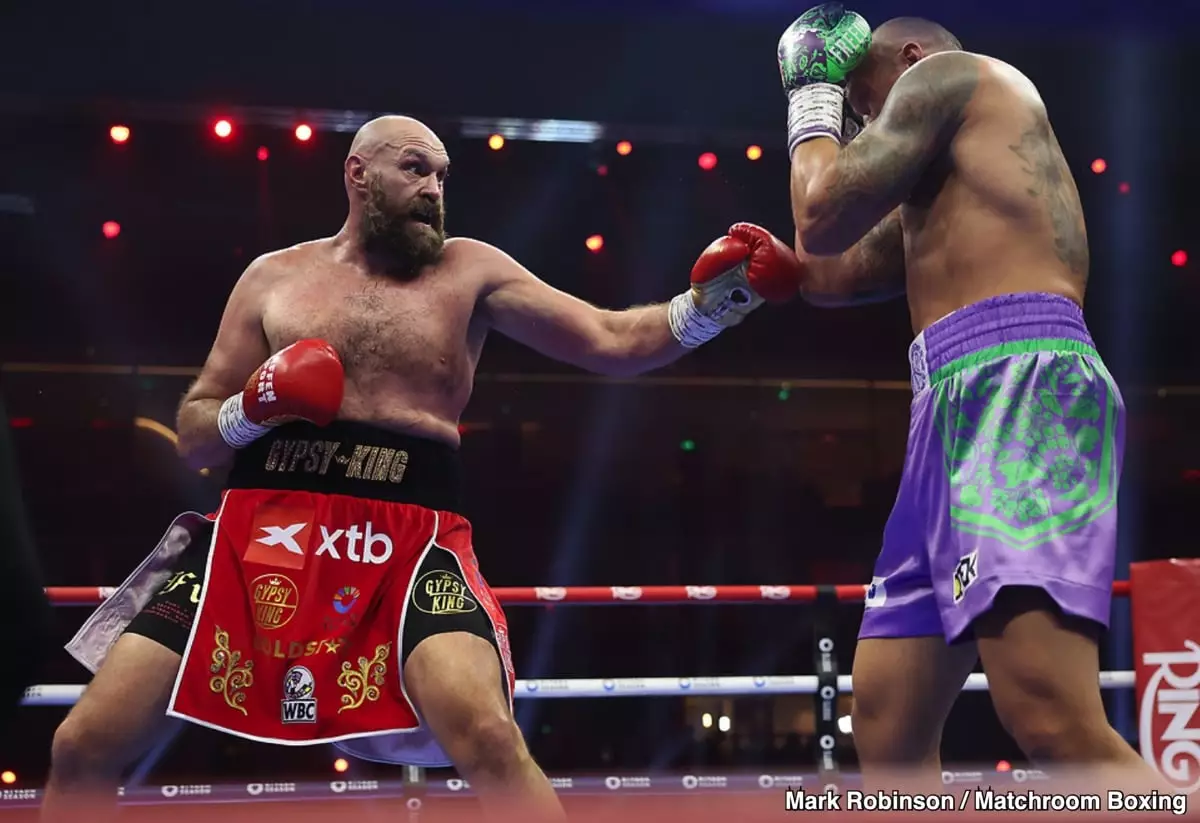The recent bout between Tyson Fury and Oleksandr Usyk has drawn considerable debate, especially regarding the scoring and the fighters’ performances. Promoter Eddie Hearn offered his take on the fight, describing it as a draw, while the judging panel awarded Usyk a unanimous decision victory. This conflicting narrative opens up discussions around fight analysis, the role of promoters, and the implications of performance in high-stakes boxing matches.
The Fight Breakdown: A Tactical Affair
The Fury vs. Usyk rematch was anticipated to be a thriller, yet it unfolded more like a tactical dance than an all-out brawl. Hearn’s view that the fight was a draw signals the complexity of boxing scoring, where subjective impressions can lead to wildly divergent opinions. Notably, while Hearn found the bout close, the judges saw it differently, giving Usyk three identical scorecards of 116-112. The question arises: what did the judges see that perhaps Hearn and others missed?
In boxing, effective aggression, clean punches, and ring generalship are key scoring criteria. While Fury often entered the ring looking invincible, his performance this time painted a different picture. He appeared to struggle against Usyk’s elusive style, often failing to connect with his renowned uppercut. The larger issue was his inability to establish control over the fight, leaving Usyk to dictate the pace.
One striking aspect of the fight was Fury’s physical condition. Acknowledging his ‘Elvis paunch’ and high-waisted shorts spotlighted a potential lapse in preparation. Professional athletes are expected to maintain peak condition, particularly before pivotal matchups. These details are more than just visual; they contribute significantly to performance, dictating stamina and effectiveness in the ring.
Fury’s three-month preparation promises, with claims of distancing himself from family to focus on training, now seem questionable given his evident fitness issues. His bulging midsection sparked discussions about his diet and commitment, which appeared incongruent with his historical reputation for resilience. If indeed he had maintained a 6,000-calorie diet, this raises concerns about nutritional strategies, or lack thereof, leading up to the match.
Promoter Bias and Public Perception
Hearn’s declarations, suggesting that many around him at ringside scored the fight for Fury, illustrate another layer of the boxing world—the influence of promoters. This harmonius agreement among promoters, seemingly in favor of Fury, may prompt fans to ponder whether bias clouds judgment in professional boxing. Promoters are often invested in the narrative they shape—investments in fighters can lead to predispositions that challenge impartiality during fights.
The commentary from Sergio Mora also highlighted another dimension. Mora’s insights brought in an element of clarity amid the chaos, acknowledging Usyk’s consistent ability to counter Fury’s offense. When Fury sporadically landed punches, Usyk frequently responded with multihit combinations, an exchange that evidences superior ring IQ and adaptation.
Moving past the match’s outcome, the implications for both fighters and the heavyweight division at large are profound. Usyk’s victory solidifies his status as a leading heavyweight, raising questions about future matchups and potential rivalries. For Fury, the loss symbolizes potential instability in a career marked by grandeur. His next steps post-defeat will be critical, not only for his own legacy but for fans seeking to disambiguate the heavyweight landscape.
This rematch may also inspire further bouts, especially with the calls for a third fight gaining traction. However, it’s essential for Fury to address deeper issues—whether they be physical, mental, or strategic—if he hopes to regain lost ground.
The Fury vs. Usyk rematch stands as a significant moment in boxing, provoking critical conversations on scoring, fighter conditioning, and the overarching influence of promoters. As discussions linger over the fight’s results, it serves as a reminder that in boxing, perceptions often shift as rapidly as punches are thrown. Ultimately, as fans and analysts continue to dissect this match, they also reflect on the rapidly evolving narrative of heavyweight boxing, where every bout has the potential to redefine legacies.

